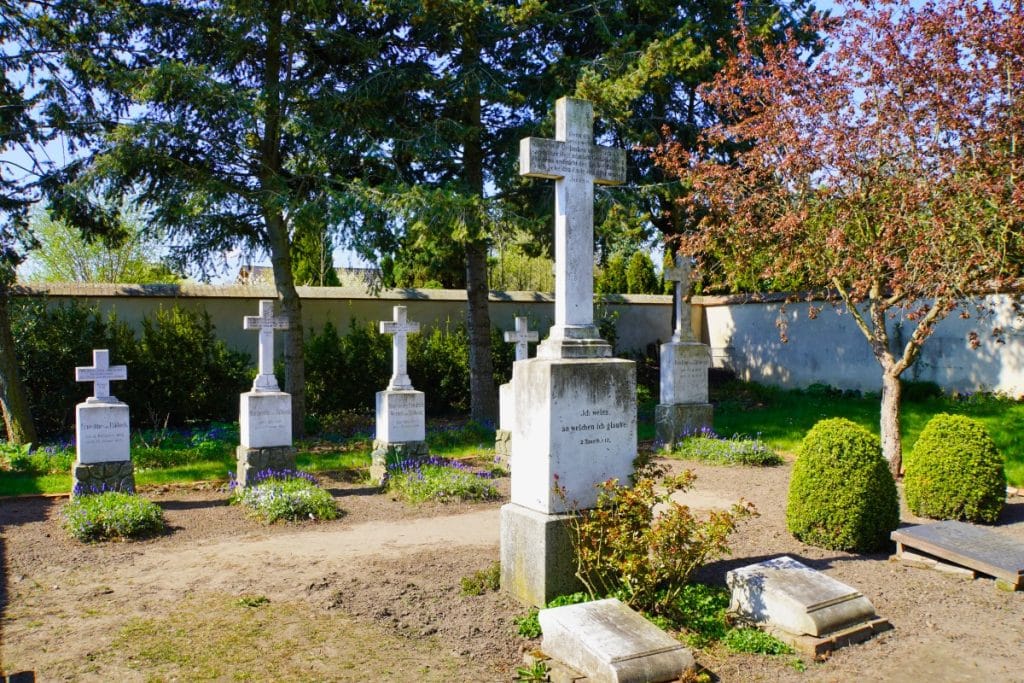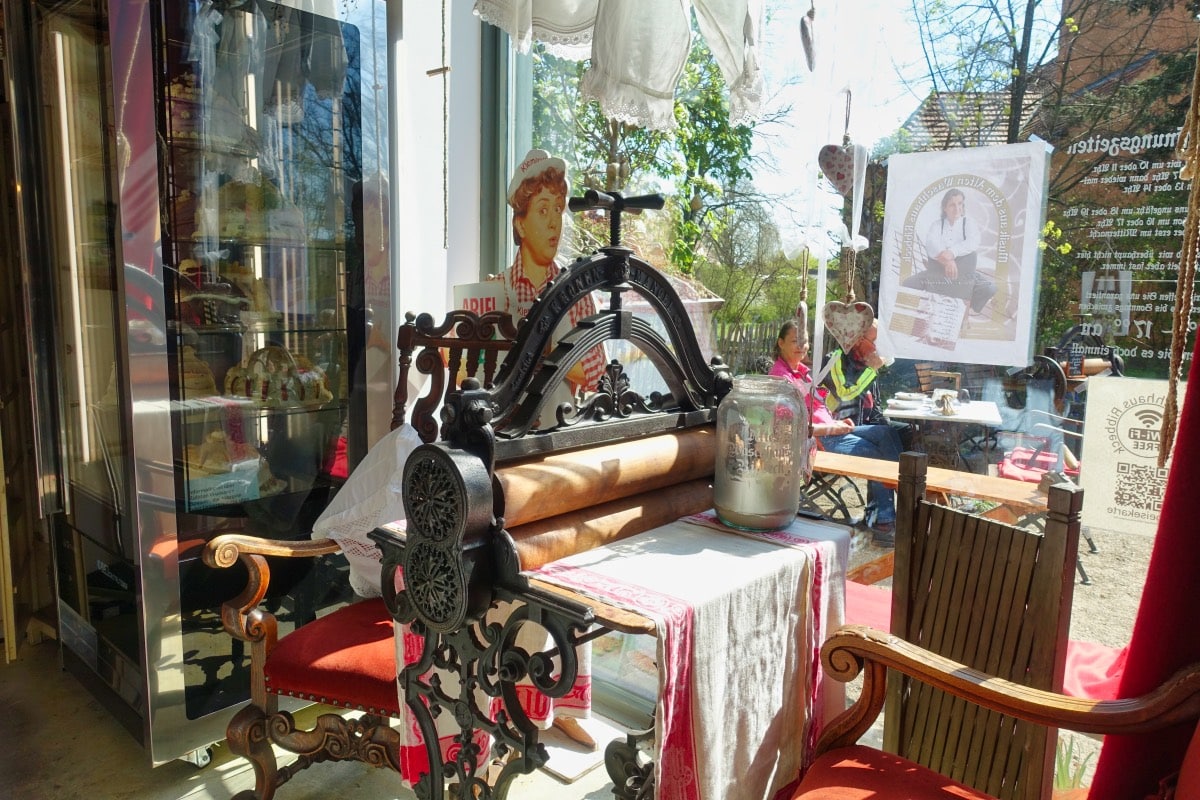Was Theodor Fontane aware that his pear tree had helped the small village of Ribbeck in Havelland to become incredibly famous?
Ribbeck is located about 9 kilometres northwest of Nauen in the Havelland region of Brandenburg. It is a small village with just under 350 inhabitants and especially in summer there are times when there are almost more visitors than residents in Ribbeck.

The first documentary mention of the village is found in the land register of 1375 by Emperor Charles IV. However, the von Ribbeck family is already mentioned in church documents around 1237. From 1374 the von Ribbeck family was feudal lord of the village. The last lord of the manor was Hans Georg Karl Anton von Ribbeck (5 July 1880 – 15 February 1945). He was a convinced monarchist and Nazi opponent. In 1944 he was sent to the Sachsenhausen concentration camp, where he was killed.
The pear tree
The small town became famous through a poem by Theodor Fontane entitled “Herr von Ribbeck aus Ribbeck im Havelland”.
I had to learn the poem at school back then and unfortunately not more than a few lines have remained in my memory. If you feel the same way, you should watch the video in which a member of the von Ribbeck family reads the poem aloud.
The poem recalls Hans Georg von Ribbeck (1689-1759), who is said to have served as a model for Fontane.
The pear tree really existed in Ribbeck. It stood in front of the village church. In February 1911, a storm unfortunately knocked down this tree. The stump is still kept in the church today.
In the 1970s a new pear tree was planted, but it never produced the desired pear yield. In April 2000, it was decided to plant a new tree.

What can you see in Ribbeck? Is it worth a visit?
Of course, Ribbeck is not exactly a place where you can spend hours sightseeing. Nevertheless, a visit with a short tour of the village and a slice of pear cake in the café is worthwhile.
Village church in Ribbeck
The Protestant village church of the small village is a hall church. In 1722, the existing building was fitted with new, larger windows and the west tower was altered. In 1887, the nave was extended and an apse was added. Later, several renovation measures were carried out, which gave the church its present appearance.


In the church there is the “famous” stump of the pear tree and the grave of Hans Georg von Ribbeck, who is said to have been the real-life model for the gentleman in the poem. In front of the church there is not only a pear sculpture, but also a pear tree – one of the most popular photo motifs in the village.
Ribbeck Castle
The von Ribbeck family lived in a single-storey country house from about 1822. Fontane refers to this building in his poem as a “double-roofed house”. The Roman date MDCCCXXII (1822) in the south gable of today’s castle is still a reminder of this building.

The castle as it stands today in Ribbeck was built by Hans Georg Henning von Ribbeck from 1893 onwards and served the von Ribbeck family as their family residence for many years.
During the Second World War, an air force unit used the castle and the family moved into the inspector’s house. The last lord of the manor, Hans Georg Karl Anton von Ribbeck, was killed in the Sachsenhausen concentration camp in February 1945. After the end of the war, the von Ribbecks were also expropriated in the course of the land reform. However, as they were classified as victims of fascism, they were initially allowed to continue living in the castle. In November 1947, they were finally expropriated and the family had to leave the village.
The castle became the property of the district of Nauen. It was rebuilt and, for example, the family coats of arms were removed. From 1956, the castle was used as a nursing home.

After reunification, the von Ribbeck family wanted their property back. An agreement was reached before the Potsdam administrative court. Today, the castle is owned by the district of Potsdam and is used as a museum, event location and restaurant. The von Ribbeck family lives in two houses in the village.
You can walk through the small castle garden around the castle. For me, the building does not necessarily correspond to the idea of a castle. I would have described it much more as a very large mansion that is visually rather plain from the outside, but still quite impressive.
Cemetery
If you walk through the small castle garden, you come to the von Ribbecks’ family cemetery. When three children of the family died of diphtheria in 1893, they were buried there. To this day, family members are buried there if they wish. When we were there, the youngest grave was that of Hans Georg Friedrich Henning von Ribbeck, who died in 1993.

Old distillery
One of the most striking buildings in the village is the Old Distillery with its tall chimney. The distillery belonged to the von Ribbeck family. Potato schnapps was produced here and transported to the distillery by a small railway.

In GDR times, the building housed a granary. Unfortunately, no value was placed on preserving the building, which dates back to the mid-19th century, and it fell into noticeable disrepair. The von Ribbeck family bought back the distillery in 2001 and thus saved the building from final decay. Countless hours of work and a lot of money transformed the Old Distillery into a beautiful building that is now mainly used for events.
Parish garden with the pear orchard
I particularly enjoyed the short walk through the parish garden. This originally served the parish priest as a kitchen garden for growing food. An initiative has redesigned the garden and made it accessible to the public.

There are landscaped areas here in which artistically designed biblical themes are taken up. Laid out flower beds and small paths invite you to take a walk. If you follow a small path, you will reach the pear garden. Numerous pear trees grow here, all of which bear different pears in autumn. We were able to see the blossoming trees in spring and there I honestly didn’t see any differences.

Old Laundry
At the end of the visit to Ribbeck, of course, you can’t miss a piece of pear cake. The Old Laundry of the village is now a cosy café that is designed in the style of the washhouse theme. In the small garden you sit at ironing boards and washstands, old irons with table names stand on the tables. A clothesline hangs across the garden, with laundry fluttering on it.


In the Old Laundry, the theme of pears is the programme. In the small shop there are numerous regional products with pears. We made ourselves comfortable with coffee and pear tart. The pear tart is made here according to old recipes and in almost countless variations. We had about 6 different tart variations to choose from during our visit. It tasted good and it took a bit of willpower not to try every variation.


Opening hours:
Thursday-Sunday: 11-17 h



Leave a Reply